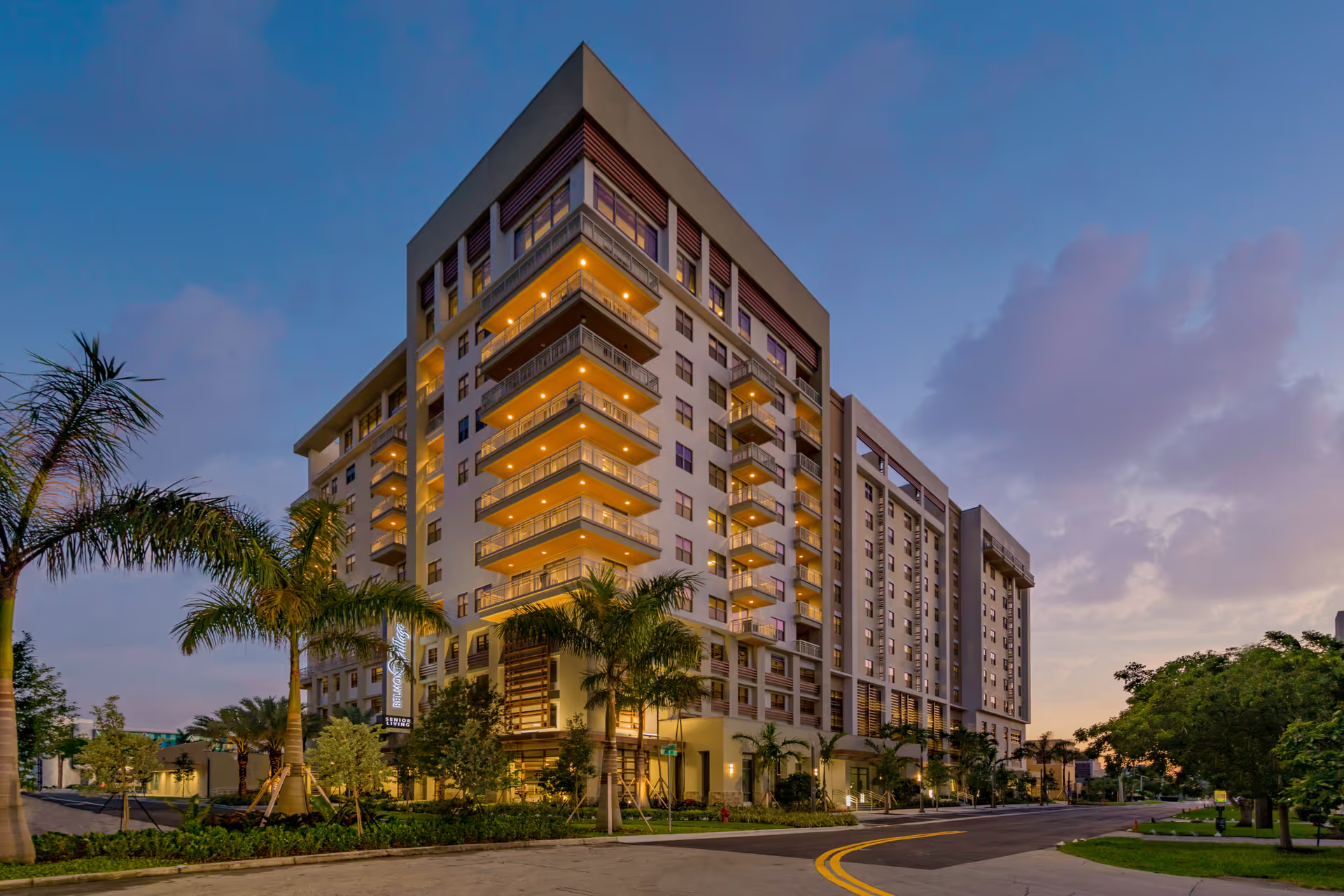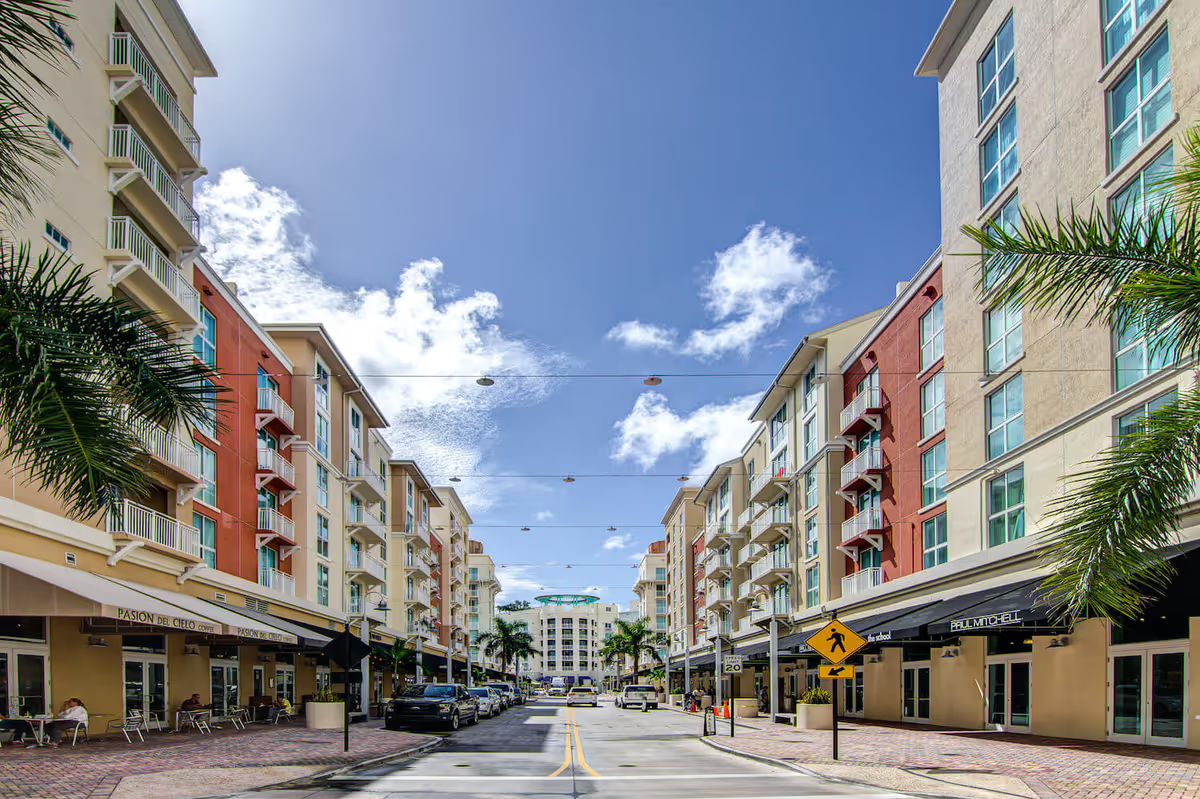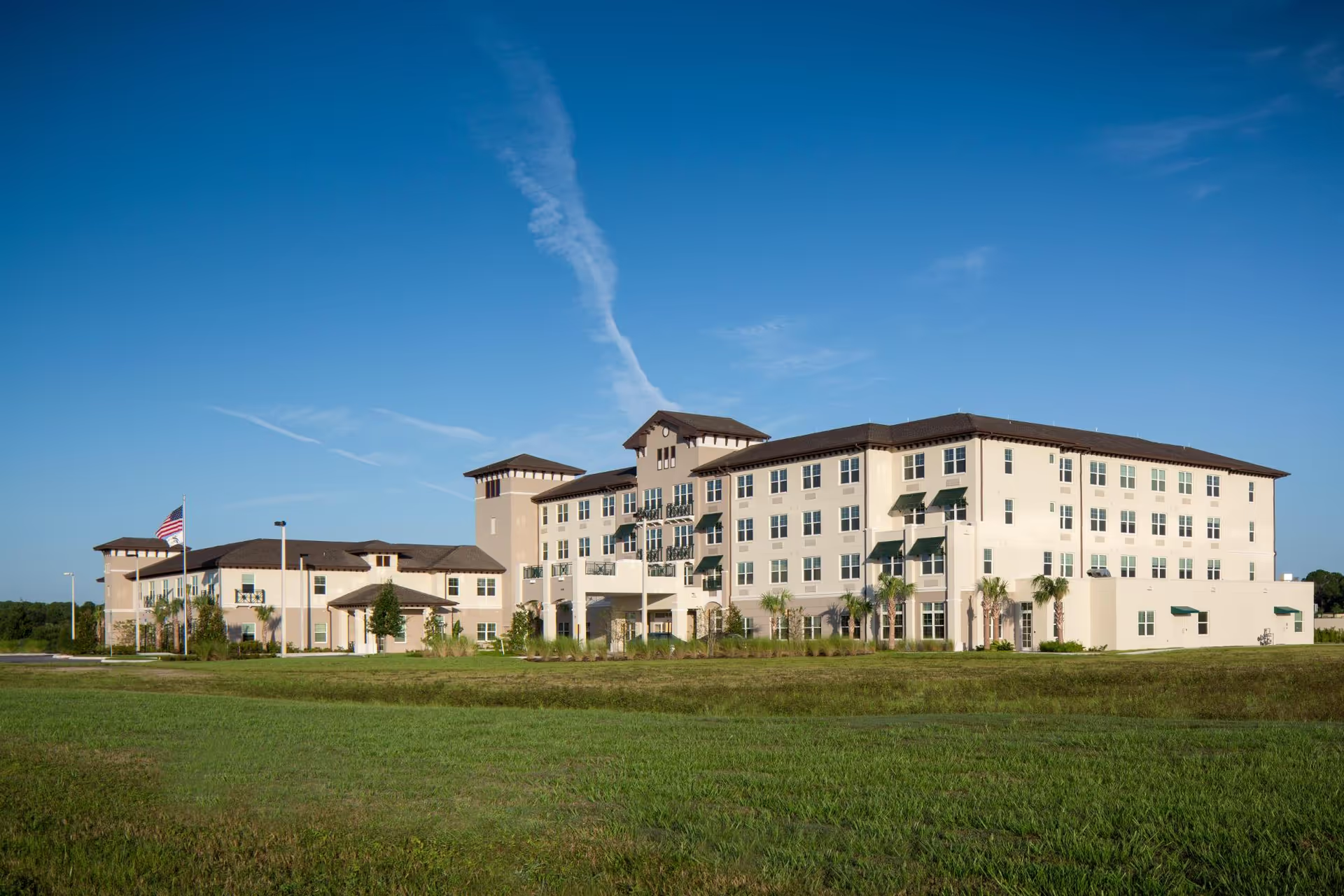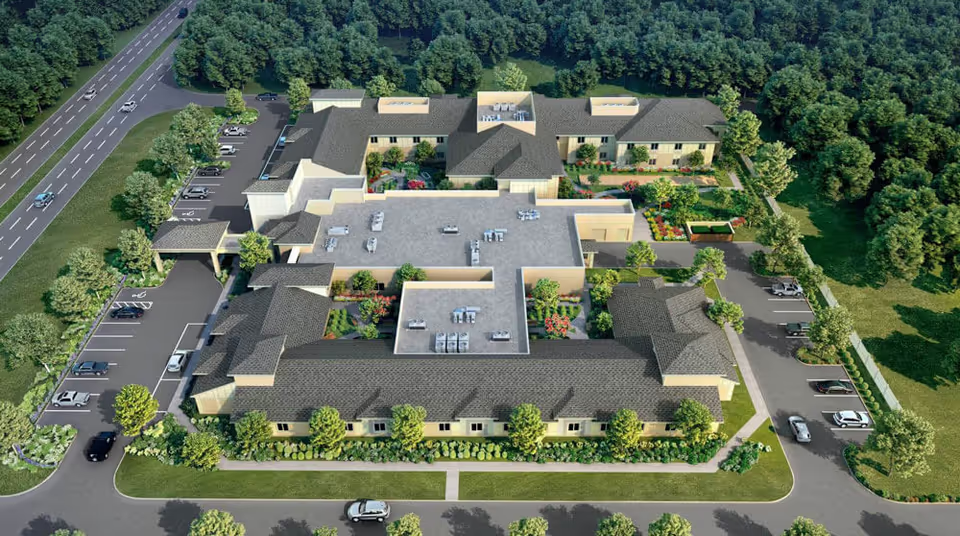Overall sentiment across the reviews is strongly positive, with consistent praise for the quality of day‑to‑day care, the warmth and engagement of staff, and the facility’s cleanliness and modern design. The dominant theme is that residents are treated with compassion and dignity: many reviewers explicitly say staff treat residents like family and call out individual employees by name (frequently mentioned: Nandy, Musi, Loretta, Sarah, Evangeline, Jamie, Paula, Terry Anne). Families repeatedly highlight seamless move‑ins, attentive caregiving, medication management, and staff who know residents by name. The building itself is described as new, immaculate and thoughtfully designed, with desirable amenities such as a lake view, butterfly garden, covered patios, walking paths, spa/jacuzzi, gym, salon and spacious apartments. These physical attributes, paired with a bright, hotel‑like atmosphere, are important contributors to reviewers’ strong overall impressions.
Care quality and clinical services receive substantial positive feedback. Multiple reviewers singled out memory care as a strength—describing engaged, patient dementia care, structured memory neighborhoods, and staff skilled in supervision and activities appropriate for Alzheimer’s/dementia residents. The on‑site therapy and rehab offerings (PT/OT/SLP) are frequently noted as comprehensive and helpful; families appreciate the clinical oversight, routine nursing checks, and involvement of a director of nursing. Numerous comments reference 24/7 nursing presence and accessible physicians/clinical staff. That said, some reviews include concerns about nursing coverage on particular shifts or wings, and a few specific reports described incidents (falls, limited nurse presence) or questioned staffing ratios, which introduces nuance to the generally favorable clinical picture.
Staffing, culture and customer service appear to be the single most praised dimension, but also the most mixed. A large majority of reviewers describe staff as warm, compassionate, energetic and proactive—often going above and beyond for residents. Sales, concierge, activities and dining staff receive regular commendation for friendliness and helpfulness. Activities staff and the social program receive repeated praise for creative, abundant offerings (exercise classes, Bunco, Bingo, brain games, music, field trips, holiday events, wine tastings, rosary/communion services). This active programming supports social engagement and is cited as central to residents’ happiness. Conversely, recurring concerns surface around communication and operational consistency: some families reported poor responsiveness to calls and emails, inattentive or multitasking front‑desk behavior, management that seemed unhelpful in isolated cases, and reports that weekend staffing was light. A number of reviewers explicitly said staff seemed overworked, and several described situations where clinical notes or hospice equipment management were not handled seamlessly.
Dining and hospitality elicited mostly favorable comments but with important caveats. Many reviewers praised restaurant‑style dining, chef responsiveness to special requests, fresh desserts and personalized meal adjustments. Several reviews described the dining room as bright and a social hub. However, there are multiple negative comments about food quality—most commonly that vegetables seemed canned/frozen or overcooked—and some reports of slow dining service. Laundry service complaints (wrinkled or grey items) and occasional dining staff slowdowns were mentioned by a minority, signaling areas for operational improvement.
Operational and financial patterns deserve attention. Many families praised smooth onboarding, helpful tours (including virtual options), transparent care planning, and compassionate transition support such as respite rooms and medication reconciliation. Yet cost is frequently flagged: reviewers note relatively high monthly pricing, private‑pay model limitations, and at least one report of a significant non‑refundable move‑in fee. Several comments suggested a strong sales and marketing presence—some saw this positively (professional, non‑pushy tours), while a few felt marketing sometimes took precedence over clinical needs. A handful of reviewers raised serious concerns about documentation rigor (RN notes), potential regulatory/statute issues, and one mention of a maintenance director stepping into a director role—these are isolated but notable comments that contrast with the many positive regulatory/licensing remarks.
Safety and risk‑related comments are mixed but important. Many residents and families state they feel safe and confident in the facility’s protocols—secure visitor screening, attentive caregivers, and protective COVID practices were praised. However, isolated reports of understaffing, weekend shortages, slow call‑button response, and a couple of specific safety incidents (falls or limited nurse presence in a wing) indicate variability in experience. Reviewers highlighting dementia care overwhelmingly reported a safe, engaging environment; those raising safety concerns tended to couple them with staffing and communication issues.
In sum, Arbor Terrace Cooper City receives robust, frequently effusive praise for staff compassion, cleanliness, amenities, active programming and memory care capability. The community’s strengths are its people (caregivers, activities and admissions teams), modern attractive facility and broad programming that fosters social engagement and peace of mind. The most consistent areas for improvement reported across reviews are operational consistency—especially front desk communication, some dining/laundry service aspects—and staffing levels on certain shifts (weekends or specific wings), which can affect responsiveness and perceived safety. Cost is also a recurring consideration for some families. Prospective families should weigh the overwhelmingly positive staff and facility indicators against the isolated but recurrent reports of communication lapses and staffing variability; asking specific questions about staffing ratios, weekend coverage, clinical documentation practices, and fee structure during a tour or follow‑up conversation would help address those concerns.







